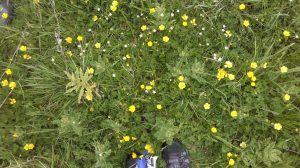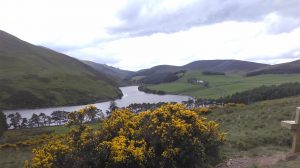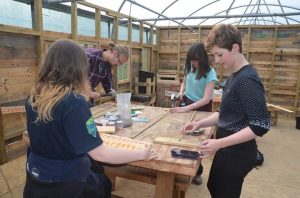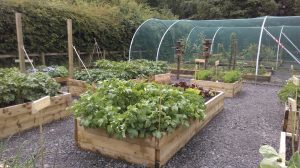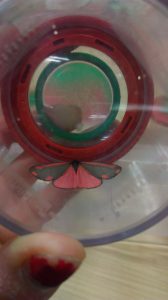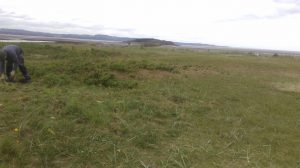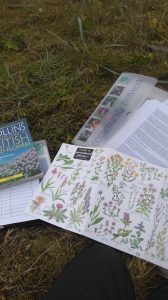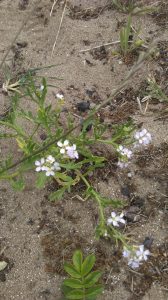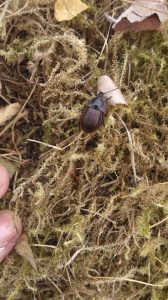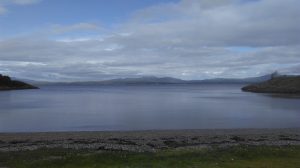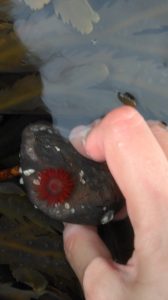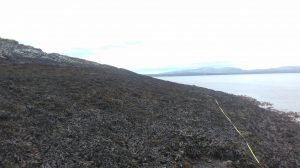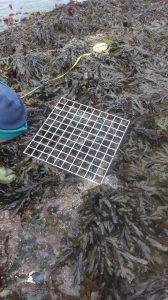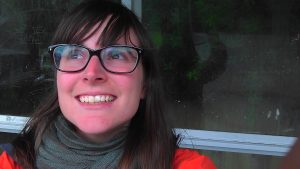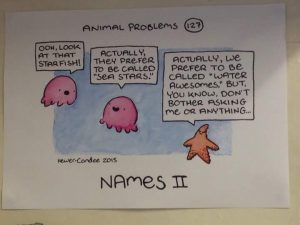
Summer is already here! And with it, so many exiting things!
First week: Phase 1 habitat survey training (TCV-Edinburgh)
The main focus of the course was to learn how to assess a habitat type using the Phase 1 survey methodology, to map and write this up competently and to understand how to read Phase 1 habitat maps. We spent most part of our time outdoors, learning about different habitats and tips to recognise them quickly. I totally recommend this course, I learnt a lot!
Second week. Jupiter Urban Wildlife Centre
I was lucky to spend two days this week at Jupiter Urban Wildlife Centre. What is great about this place? Everything! It´ s an oasis in the middle of an industrial area, an example of how we can change grey industry land into a spot full of life! They have super fun activities, like pond dipping, trees and birds identification…
The first day, as part of a TCV meeting, we helped at the celebrations of their 100th session, where people could join in with TCV’s food growing and recycled woodwork projects. It was one of those beautiful sunny and warm days in Scotland, so we all enjoy working outside.
During my second visit, I helped running a BioBlitz with TCV, the Scottish Wildlife Trust ranger and some skilled volunteers. We were unlucky with the weather during the morning, so not a lot of people joined us. Although that did´t stop us! And some of us went to check the moth trap and see what was living there! I must say that, right after we catch the first moth, I knew I will always be a moth fan!
After lunch, several families came, and we all had the opportunity of participating in different activities, like pond dipping, worm survey, dragonfly identification, birds, flowers, trees… super fun stuff!
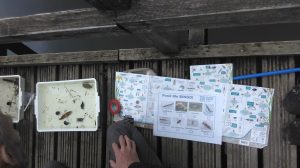
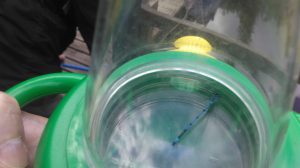 Third week. A day out with TCV mid week group
Third week. A day out with TCV mid week group
If you like outdoors volunteering, TCV is definitely your group! We were at Cramond, working to conserve a coastal sand dune, that is a UKBAP Priority Habitat. We were removing an invasive non native specie, called Japanese Rose.
It was really hard work, at first it looks like a nice, wee flower, but the truth is that its roots are so long and thick that make the job very hard! It does a really good job as an invasive specie.
During the second day with TCV, we started with a wee survey. Unfortunately, the tide wasn’t good enough for surveying seaweeds and coastal lichens. So we focused on the sand dune. Luckily, we found an area full of life, what made us think that the work done on this dune, for its development and conservation, is going on the right way! Super exiting!
Forth week. Oban. I have always loved the smell of seaweeds
The month couldn’t finish better! I was invited to visit Scottish Association for Marine Science (SAMS), one of my project’s partners. Starting with the fact that Oban is one of my favourite coastal towns in Scotland, and that I am extremely interested in seaweeds, I knew the experience was going to be a 10/10.
First day. Oban is even more beautiful that what I knew
We went out to Dunstaffnage peninsula, 5 minutes walking to the main building, where we had the first try with seaweeds, which was hilarious! I had the opportunity of going to the shore with and expert, so I learnt about donation, seaweed identification, and fun facts about the rocky shore!
Rocky shores are alive!
Crabs attacked us while we were trying to learn the main keys to identify seaweeds. Well… it happened because we put our hands where they were resting, and they were trying to defend themselves.
I learnt how to use a clinometer to measure the slope of the shoreline, what is very important in terms of exposure to the elements.
In general, a good start, learning from the very fist second, and what is very important, having fun!
Second day. A mix of experiences!
During the morning I had the opportunity of learning more about harvesting seaweeds. Uses and benefits. Seaweeds are largely used for food, cosmetic, fuel and in fisheries all around the world. That is why we must be aware of our impact in natural habitats, developing a sustainable method to grow them.
I also helped a graduate student on recording underwater life. Following what I learnt on a TCV training course, we focused on how to record a project making it very informative to the public.
I hope you can see the video!
What else? If you think there can´t be more, you’re wrong! I helped recording data for a research project, looking how natural disturbances, such us storms, may affect seaweed growth. What is, from my point of view, my dreamed research project! I felt like a little kid in a candy store!
Third day. Seaweed samples, lab experience and a wonder under the rain
For my last day at Oban, we went out to take some samples for a CoCoast training day during that week. One thing you need to take in account when your working in a rocky shore is that they are pretty slippery! And you may try to go down walking, but at the end you will probably fall down and slip!
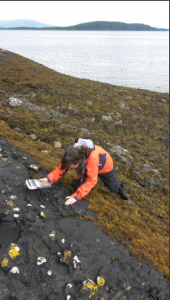 I also had the opportunity of using the microscope to identify some pretty interesting red seaweed.
I also had the opportunity of using the microscope to identify some pretty interesting red seaweed.
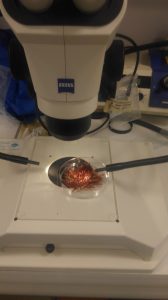
So, new keys to identify seaweeds, new valuable knowledge, and the opportunity of meeting new people involved in exiting projects. SAMS is more than what I expected. I hope I can go back soon…
That´s all for now! I can´t be more grateful for this opportunity!
Thank you TCV, SAMS Esmée Fairbairn RBGE
Aroa

